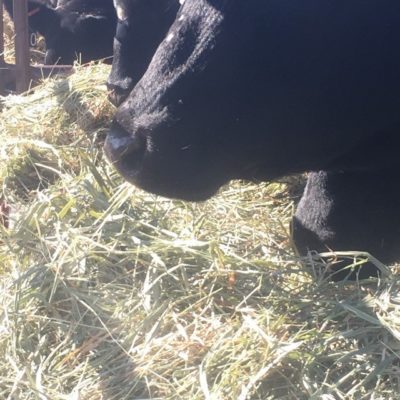It’s that time of year, when most Americans start dreaming of turkey, potatoes, gravy and stuffing. Before there are any drumsticks on our plates however, turkey producers must focus on feeding turkeys for holiday feasts. To maximize production efficiency nutrient requirements must be met.
Energy
Energy comes from carbohydrates and fat in the feed. It is difficult to determine the Metabolizable Energy (MEn) from a mixed ration. The MEn of each ingredient is additive. Therefore, Ward Laboratories, INC. recommends analyzing each ingredient separately and calculating the MEn based on the ratios of ingredients in the mixed feed. Proximate Analysis is required to determine the MEn of each ingredient.
Energy requirements for turkeys are difficult to define. Energy requirements vary by sex, age, and environmental factors, most notably temperature. It is important to monitor turkeys for body condition and performance to ensure the diet is meeting energy requirements.
Most often MEn requirements are a function of age and percent protein in the turkey diet.

Protein
Protein is a key nutrient to monitor when feeding turkeys. Young turkeys have high protein requirements that decrease with maturity. Recently hatched poults require a 28% crude protein diet. Finishing turkeys require only a 14% crude protein diet. Finally, holding turkeys only need a 12% crude protein diet to maintain their weight.
Micro-nutrients
Minerals and vitamins are very important to consider when feeding turkeys. Like other poultry species, they are susceptible to deficiencies. Because turkeys are a confined species, Vitamin D is often of concern. Vitamin D is involved in the regulation of calcium and phosphorous in the blood. This affects the function of calcium and phosphorous in building strong bones and egg shells. Deficiencies in calcium or phosphorous typically manifest as slow growth. Magnesium also plays a role in bone growth and shell formation. Therefore, when low egg production is a symptom, magnesium deficiency is likely the issue. Mineral requirements vary by production stage. There is also some dispute about requirements. This is not surprising considering the differences in bio-availability among feed ingredients.
Furthermore, turkey diets are typically a mix of cracked corn grain and soybean meal. Soybeans have high levels of phytate, a bound form of phosphorous. Phytate makes the phosphorous feed unavailable to the animal. When analyzing feed samples to ensure requirements are met, it is key to remember excess phosphorous is ok. Due to phytate not all phosphorus is available.
Ward Laboratories, INC. strives to be a resource to poultry producers through feed analysis. This thanksgiving, Ward Laboratories, Inc. is grateful for all the hard working producers who use information from soil reports, water analysis, feed testing and more to make the decisions that puts food on all our tables.




